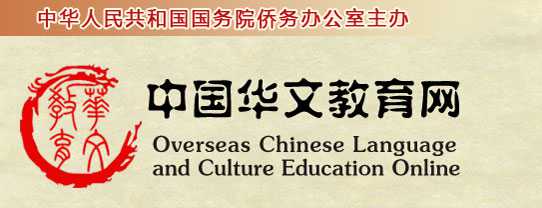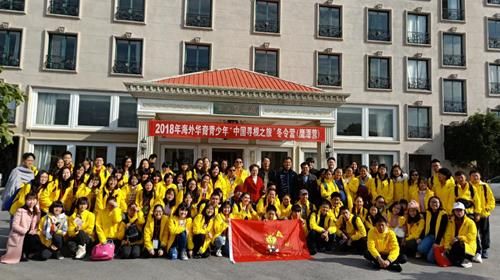|
藏族 The Tibetan ethnic group
2009年09月03日 08:58
藏 族 藏族是个古老的民族。藏族的古代政权称为“吐蕃”(tubo)。早在公元641年,吐蕃“赞普”(王)松赞干布就派使者到当时唐朝的都城长安,代他求婚,娶回了聪明美丽的文成公主。从那时开始,汉藏两族在政治、经济、文化等方面的交往就有了很大的发展。 藏族主要分布在中国的西藏自治区和青海、甘肃、四川、云南等省份,大多居住在高原地带。青藏高原平均海拔4,000米以上,世界第一高峰珠穆朗玛峰就耸立在高原的群山之中。藏族地区草原辽阔,江河纵横。体肥毛长的牦牛,不仅耐寒,还能驮很重的东西远行,是高原上重要的运输“工具”,被称为“高原之舟”。 藏族人的服饰很有民族特色。他们一般上身穿绸、布做的长袖短褂,外面穿宽肥的长袍,脚穿牛皮长靴。为了便于活动,常常将右肩或双臂露在外面,把两只袖子系在腰间。藏族男女都留发辫,男子将发辫盘在头顶,女子将头发梳成双辫或许多条小辫,披在肩上,并在发梢上佩戴漂亮的饰物。妇女们还喜欢在腰间系一条图案美丽的围裙。藏族人爱喝酥油茶和奶茶,喜欢吃用青稞粉制成的糌粑(zanba)和牛羊肉。 藏族人有一个独特的礼仪——献哈达。哈达是一种特制的白色长巾。在拜访或接待尊贵的客人时,藏族人要用双手献上洁白的哈达,以表敬意。 藏族具有悠久的文化传统。藏文始创于公元7世纪;藏医、藏药、藏画、藏戏、藏族歌舞、藏族文学等都具有独特的风格;拉萨的布达拉宫宏伟壮观,是建筑史上的杰作,已被联合国列入世界文化遗产名录。藏族人民创造的灿烂文化,丰富了中华民族的文化宝库。 藏族人信奉藏传佛教,最隆重的节日是藏历元旦。每到这一天,人们都要身?盛装,相互拜年,并到寺庙里朝拜祈福。四月十五日,相传是释迦牟尼成佛和文成公主进藏的日子,各地的藏族人也要举行宗教活动,纪念这个特殊的日子。 The Tibetan The Tibetan ethnic group is an age-old one, where there was an ancient regime called the Tubo Kingdom. In 641 AD, after its king Songtsen Gampo united the warring tribes on the Tibetan plateau, he sent messengers to the capital of the Tang Dynasty, Chang'an (Xi'an), to seek a bride. The Tang Emperor agreed and Princess Wencheng was sent to Tibet. From this beginning, the Tibetan and Han nationalities have gone on to make great progress in political, economic and cultural exchanges. The Tibetan people are mainly distributed in the Tibetan Autonomous Region, Qinghai, Gansu, Sichuan, and Yunnan provinces, and most of them live on plateaus at high altitude. The Qinghai-Tibet Plateau is over 4,000 m above sea level on average and the world's highest peak, Mount Qomolongma, towers above many massive peaks there. The area where the Tibetans live has vast grasslands and is crossed by many rivers. Yaks, with a fat body and long hair, can resist cold and are capable of carrying a heavy load long distances, so they have long been an important transportation "tool" on the plateau. The clothes of the Tibetan people have unique national features. Usually they wear a short jacket with long sleeves made of silk or cotton with a loose gown over it, and a pair of high leather boots. For convenience when working, they often bare the right shoulder or even both arms, tying the two sleeves around the waist. Tibetan men and women all wear plaits; men coil the plait on top of the head while women wear two plaits, or sometimes many, over the shoulders, with beautiful ornaments woven into the ends. Women also like to tie an apron with beautiful patterns around their waist. The Tibetan people love to drink butter tea, and eat tsampa made of highland barley flour, beef and mutton. The Tibetan people have a unique ceremony - presenting a hada. The hada is a piece of specially made white long cloth. When visiting or entertaining distinguished guests, Tibetan people present it draped over both their hands to express their respect. The Tibetan ethnic group has a long cultural tradition. A unified written Tibetan language was established in the early years of the Tubo kingdom in the 7th century; traditional Tibetan medicine, Tibetan drugs, Tibetan pictures, Tibetan operas, Tibetan songs and dances, and Tibetan literature all have their unique style. The magnificent Potala Palace in Lhasa is a masterpiece in architectural history listed in the World Cultural Heritage List. In religion, Tibetans follow a form of Buddhism known as Lamaism or Tibetan Buddhism, and the grandest festival is New Year's Day in the Tibetan calendar, when people greet each other and go to temples to worship and pray for good fortune. On April 15th, religious ceremonies are held to commemorate the day when Sakyamuni became Buddha and Princess Wencheng reportedly reached Tibet.
【来源:中国华文教育网】
|
|






















